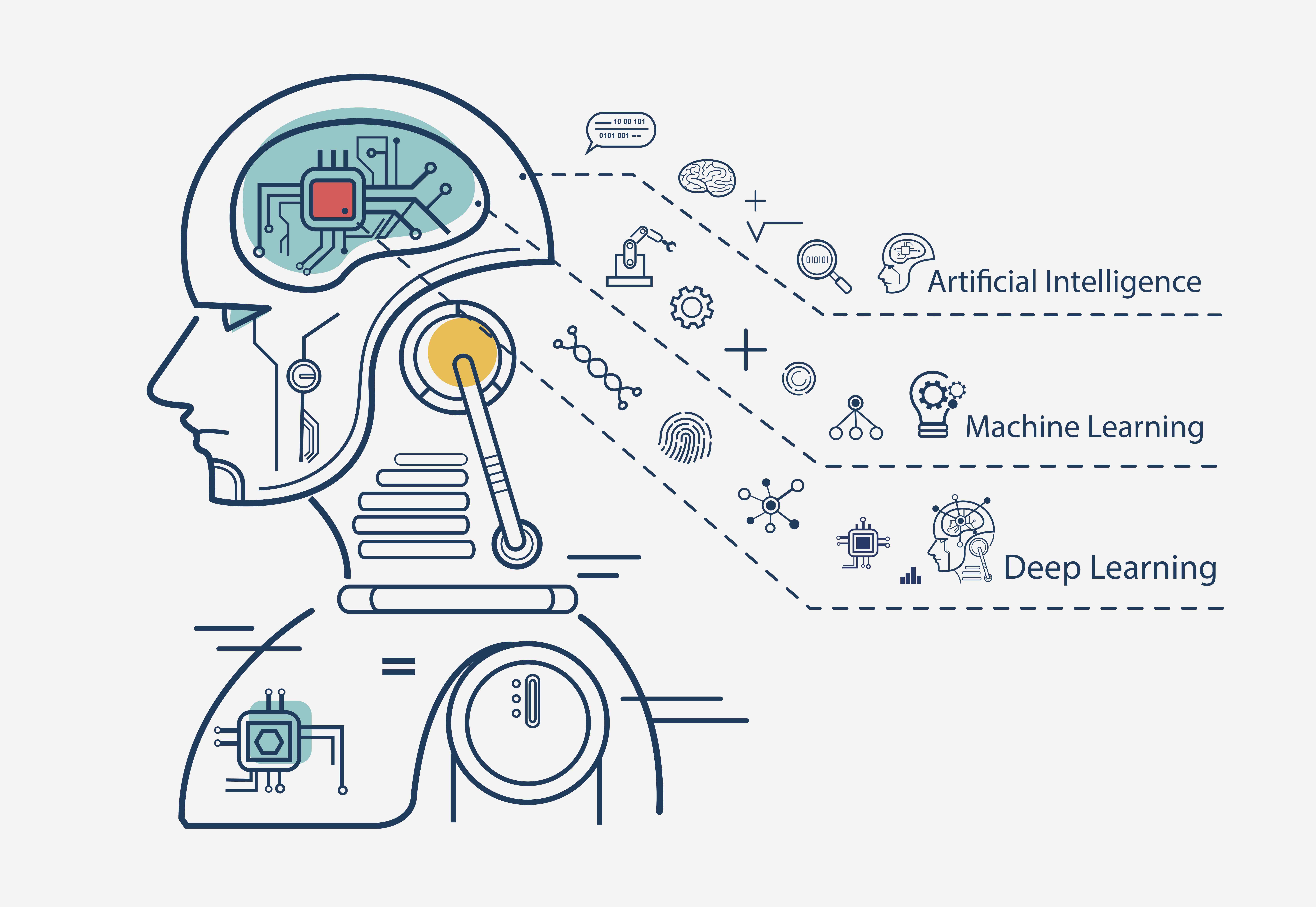If your organization is considering the use of AI, you’ll want to make sure you know about these six buzzwords that are the cornerstone of artificial intelligence: machine learning, neural networks, deep learning, natural language processing, Turing Tests, and algorithm vs. heuristic. If you missed AI Buzzwords – Part 1, we encourage you to check that out first, and then come back here as we wrap up our top six list of AI buzzwords.
What is Natural Language Processing?
The ability to communicate by writing, speaking, and understanding language has long been a uniquely human trait. However, as we continue to store more information in the form of thoughts and ideas in social media posts, web browsers, and cloud documents, language-learning capabilities are spreading into the AI world. Some examples you’re likely familiar with include chatbots, Siri™, and machine translation.
Once you understand the concepts of machine learning and neural networks, it becomes much easier to grasp natural language processing (NLP). Just as neuroscience is the basis for AI neural networks, the science of linguistics is the foundation of NLP. Linguistic scientists have determined that almost all human languages are based on words and phrases. NLP takes these same concepts and translates them into the AI universe.
To help make this easier to understand, consider the way the Google™ algorithm works (at a high level). When a user types a phrase into the search box, Google™ “chunks” the data into its component parts, matches the words to its index (database), and outputs relevant results.
To do this, the algorithm must understand not only the words but also the context. For example, someone who types in “foot” could be referring to the unit of measurement or the body part. Once the algorithm determines what the searcher wants, it needs to examine potential search results for relevance. It does this, in part, by considering other contextual words. In this case, does the rest of the article contain phrases about the metric system or words related to anatomy?
It’s not hard to see the challenges these systems face, particularly when they’re newly learning or there isn’t enough input to make correct assumptions. To further complicate things, the human language is always changing as new slang terms become popular. This poses another challenge for AI NLP systems, like Siri™. At first, the system may have trouble understanding what the user wants until it’s able to gather enough data and context to match these new phrases with something it already knows. Eventually, however, just as in machine learning, the system becomes more adept and flexible, making it more likely to deliver relevant output.
Understanding the Turing Test
It’s common to hear news of an AI development passing the “Turing Test,” but what does this actually mean? A Turing Test is based on a concept developed by computer scientist Alan Turing in 1950. Its purpose is to determine whether a machine can communicate in a way that makes it indistinguishable from an actual human conversation.
The original test involved a text conversation between a human judge and another human. When a computer is substituted for the second human, if the judge could not tell, then the machine would have passed the test and is considered “intelligent.”
Back in his day, Turing predicted that by the year 2000 most computers with at least 100 MB of memory would be able to pass this test. However, as of today, no machine has ever passed the Turing Test. This shows that it’s not just memory and processing power that allows a computer to generate human-like conversations. Until machines are able to capture the vast underlying knowledge and intuition that humans possess, they will continue to fall short.
Algorithm vs. Heuristic: What’s the Difference?
“Algorithm” and “heuristic” are both important words in AI. Although they’re similar, there are some critical differences.
In AI, the term “heuristic” refers to a general rule that is usually effective and typically leads to a solution. It’s basically a shortcut, and it doesn’t guarantee an actual solution to a problem. Antivirus software is an excellent example of a heuristic program. These programs work according to a set of rules created to detect code and/or computer behavior that resembles a virus. In this case, a heuristic approach is appropriate because it allows the program to scan computers faster and more efficiently than an algorithm would. Also, false positives aren’t a bad thing, as they help keep the system safe.
An algorithm, on the other hand, follows a set of instructions or commands that solve a problem unambiguously. These are the types of math problems students solve during computer science classes to perform a program loop. Some of the most popular algorithms functioning today are Google’s™ RankBrain algorithm, which determines search results, and Facebook’s™ EdgeRank, which chooses which articles to display in a user’s newsfeed.
Now that you understand the most common AI buzzwords, you’ll be able to navigate AI conversations like a pro!
